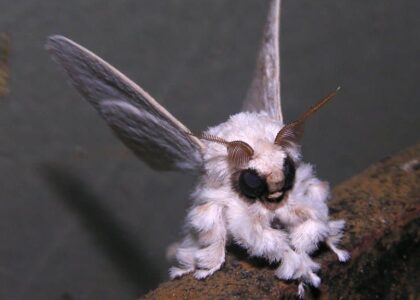We see the types of animals that roam the Earth today, with their heightened senses, strange looks and abilities, it can be hard to imagine what animals that roamed the Earth before extinction looked like. Unfortunately, most species do end up going extinct and despite the many species which have disappeared off Earth, the Mammoth is one organism which continues to intrigue our curiosity.
The mammoth was a large elephant-like creature fully covered with hair and is popularly known for roaming the Earth around the ice age. There is much more to the mammoth other than what we see in the Ice Age movie. Here are some interesting facts you may not have known about the Mammoth and what life was like for these magnificent creatures.
What Exactly Are Mammoths?
Mammoths are mammals which are a part of the genus Mammuthus and were large, hairy elephants residing in the arctic. There were many different types of mammoths, however, some of which ranged from 4m to 1.75m tall and could weigh up to 10 tonnes in some species. Not all of them were giant, in fact, the Wooly mammoth was no larger than the modern Asian elephant. Other mammoth species also differ in that some contained hair while others did not, and some lived in colder climates like the Arctic while others resided in Mediterranean or African climates.

Where Did They Originate From?
Around 6 million years ago is when the elephant family originated from Africa and continued to colonize other parts of the world. The branch of mammoths was discovered to have lived around 4-5 million years ago originating from Africa and entering Europe around 3 million years ago. At the time of the late ice age, the mammoth populations migrated towards Northern China and North Eastern Siberia where they adapted to cold, treeless environments. The last stage of the mammoth, popularly known as the Wooly Mammoth, spread west into Europe and East across the Bering land bridge into North America.
How Did They Live?
To survive colder climates, Wooly Mammoths had a coat of fur with shorter tails and smaller ears than living elephants today. Such features helped the mammoths preserve their heat. Their diet consisted of tough, grassy vegetation. Evidence shows that the mammoths lived according to social structures which are similar to modern day elephants which include, matriarchal female-young groups and separate adult males.
How Did They Become Extinct?
So how did a species which roamed different areas of Earth become extinct? There are various debates which argue whether or not the extinction was due to climate change or because of modern humans and Neanderthals. However, before the spread of the human population, mammoths survived various climate changes which lead researchers to believe that humans may have played a role in their extinction to some extent. Around 20,000 years ago, many mammoths still roamed around Northern Eurasia and North America, however, this significantly decreased when the climate started to warm about 15,000 years ago. As temperatures increased, their habitat of dry northern grasslands began to vanish. Around 10,000 years ago, mammoths disappeared from the mainland where they survived on Wrangel Island in the Arctic Sea up until 4,000 years ago.
Sources:
Hofreiter, M., & Lister, A. (2006). Mammoths. Current Biology, 16(10), R347–R348. https://doi.org/10.1016/j.cub.2006.04.020





